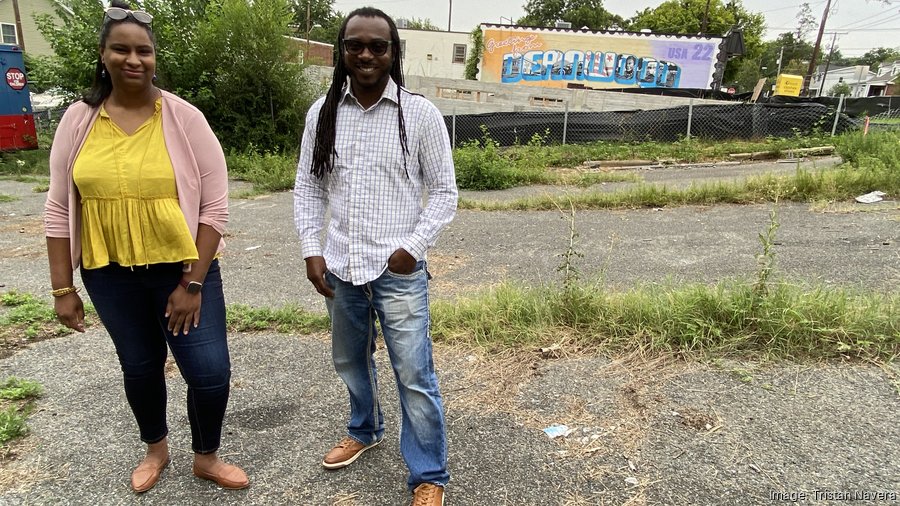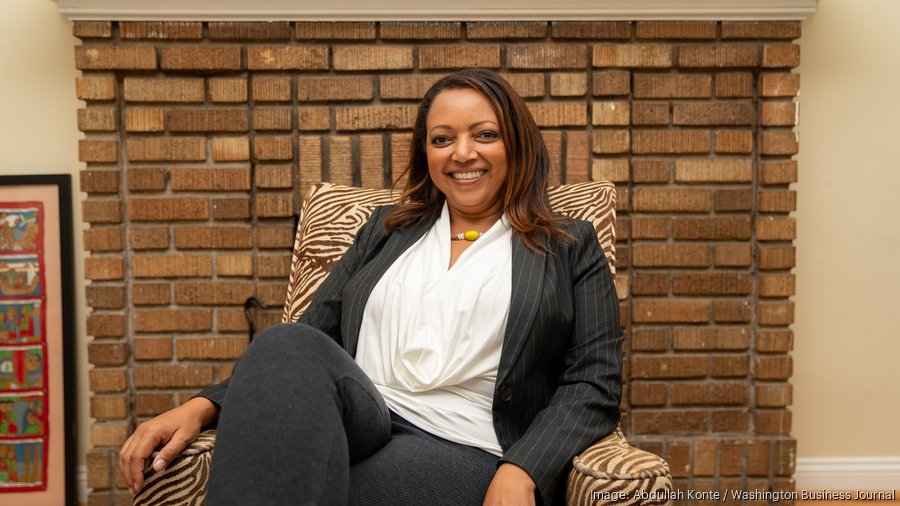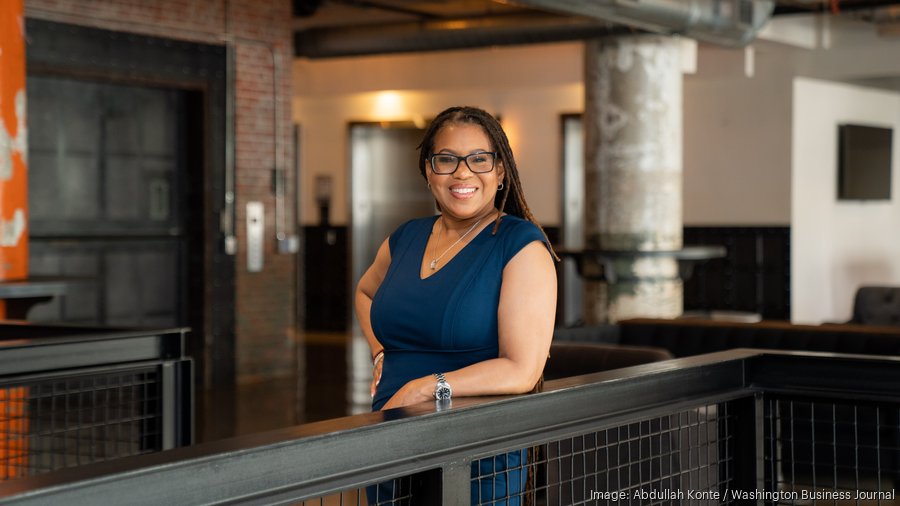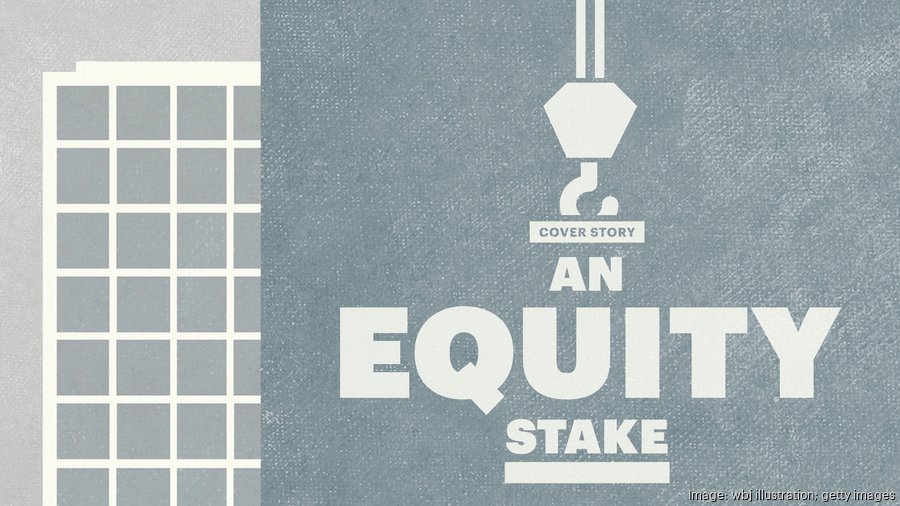Listen to this article 3 min
For Patrice Williams-Johnson, her success has been her downfall.
The Gaithersburg real estate investor counts 15 years in the business, coupled with several years in her financial management day job at the U.S. Nuclear Regulatory Commission. She bootstrapped a business rehabbing properties in D.C. and Maryland, even launching her own nonprofit, Motown Glory Partners Community Development Corp., in Michigan to tackle affordable housing.
But her success brought with it a new, unexpected wall, one seemingly seared with the No. 10. All 11 properties under her belt contain fewer than 10 units, and in the eyes of each bank she’s approached — more than she can count — that’s just too small a portfolio to land one of their loans for a larger project. So, she’s worked to secure more capital and connections through such programs as Capital Impact Partners’ Equitable Development Initiative cohort in 2021. She’s pitched the Maryland Department of Housing and Community Development’s Emerging Developer Fund.
And yet, that vital loan remains elusive.
“I see the same thing in Michigan as I do in D.C. It’s very hard for people to get the funding, especially when you’re emerging, because [banks] are giving the money to larger companies,” Williams-Johnson said. “I have been told they want to give money to those who have experience, but how do you get experience if you don’t have the money to go after the opportunities?”
And so, she learned a very hard lesson very fast: “The industry feels very locked-down.”
Just how locked-down? A recent real estate study by Roxbury, Massachusetts-based think tank Initiative for a Competitive Inner City and D.C. nonprofit Grove Impact examined the commercial real estate industry, locally and nationally, to arrive at a stark calculation of what actual equity might yield in the nation’s capital alone. Try $3.3 billion in currently unrealized revenue to local Black and Hispanic developers like Williams-Johnson that could have otherwise been fed back into, specifically, the housing sector and, more broadly, the regional economy. That balloons to $106 billion nationally.
Real estate development, a field flush with wealth, remains dominated by white-owned businesses, narrowing the channels for developers, contractors and vendors from other backgrounds to win work and grow their businesses. For generations, a lack of access to capital has continued to be a systemic barrier, experts say, leaving only a small fraction of businesses owned by people of color to notch equivalent success, while a great many others struggle for decades to find their footing.
The last three years has revealed some progress, said D.C. developer Bo Menkiti. But a lasting difference will take a more concerted effort. Plus, developers of color are more likely to lift up other businesses of color, Menkiti said, raising hopes that, if addressed, these efforts could snowball.
“Most of the initiatives put in place are at the top of the funnel, but there is little to no focus on organizations once they’re successful,” he said. “Programs with diverse set-asides can be a great way to get participation. But it falls short of realizing the full opportunity of diversity.”
The ‘glass bottleneck’
Greater Washington has the money, and the people, to build an equitable real estate industry. But the connections aren’t being made, according to experts who’ve studied the issue.
The region has the largest concentration of Black- and Hispanic-owned commercial real estate developers of all the nation’s metros, according to the study. But it dubbed that point in time when startup companies look to rev up growth as the “glass bottleneck,” where further success beyond small-scale construction becomes much more difficult.
Developers often start out as small outfits — rehabbing a condo or single home, then progressing to multiunit buildings, then eventually growing to larger and larger ground-up work. It’s expensive and requires a lot of personal risk in the beginning while gaining enough experience to get bank loans, said J.B. Schramm, founder of Grove Impact.
Take the projects typically around$3 million to $25 million, too large to cobble together “friends and family” dollars and personal credit lines, but too small for large institutional loans to really scale up, ICIC and Grove Impact found. Nationally, the study found, 80% of the industry’s revenue is held by firms in the midsized-to-large ranges topping $17 million in annual sales. Of that group, it said it counts six Black and two Hispanic developers — compared with 764 white-owned businesses in its nationwide database.
“The largest revenue is locked away with these large companies, and there is where the potential is for the most broad economic impact,” said Howard Wial, ICIC’s director of research.
A more equitable industry would translate to an additional $106 billion in top-line revenue, including rents, fees and income from property sales, to Hispanic- and Black-owned businesses nationwide. The study bases that on the creation of 54,000 new development businesses, supporting 1.7 million new jobs. And those additional jobs and businesses would not displace existing ones, the study said, given that the housing shortage offers plenty of new work to go around.
For Greater Washington, the study estimates that removing constraints on Black and Hispanic developers could generate 2,414 diverse-owned development businesses that create 24,163 jobs and generate $3.3 billion in new annual revenue.
“There is a representation crisis in the real estate development industry,” Peter Eberhardt, a senior research associate with ICIC, said in an April 25 web call discussing the results with D.C. real estate leaders. “Many Black and Hispanic developers are successful, but there is a revenue cliff for mid-sized companies.”
It reflects broader funding obstacles for business owners of color across industries. Capital Impact Partners released a study that found entrepreneurs of color are more likely to be denied loans — with white entrepreneurs facing a 20% rejection rate compared with 38% for Black borrowers, 33% for Latino borrowers and 24% for Asian borrowers. This causes fewer business owners of color to seek loans in the first place, CIP’s study found.

A recent citywide analysis of D.C.’s contracts and procurement program found that while $2.9 billion of a total $8 billion awarded by 88 D.C. agencies between October 2016 and September 2020 went to contractors of color, a healthy chunk of those dollars went to the same names. In all, one-tenth of the 471 contractors of color in that period won 70% of that slice, including in construction contracting, where no single disadvantaged group saw parity.
“There’s a real structural gap in the marketplace,” Menkiti said, pointing to deleterious economic effects as a result. “One, it was inhibiting the growth of underrepresented developers, especially those who have been successful. Two, it’s impacting the way thoughtful place-based projects are done. Last, it’s preventing the capital markets from America from tapping into undervalued domestic real estate assets, which is a strong asset class.”
The cash crunch
As a result of the disparity in lending, development groups led by people of color have had to piece together difficult packages of financing — including those who have claimed finance as their former fields.
Deanwood Station is a prime example. The Sheriff Road NE project is envisioned as 5,000 square feet of ground-floor retail topped by 30 multifamily units, 10 of which would be reserved for households earning up to 60% of the median family income. Its developer, Medici Road Economic Development Corp., has spent years cobbling together what was estimated to be $11 million in needed funding, including a $1 million loan from Capital Impact Partners, a $250,000 predevelopment loan from the D.C. Green Bank, a cut from the city’s Housing Production Trust Fund and even a crowdfunding campaign that sought $700,000.
They also have tried preselling condos to cover construction costs. Medici Road’s Talayah Jackson and Thomas Houston say they’ve done the research on the neighborhood to know this kind of project is in demand, but banks aren’t willing to take a chance on new names.

“There’s a lot of: ‘I know this guy and I trust him, but I don’t know you and so I won’t lend to you unless he signs off,’” Houston said in an interview last year as the firm was applying for D.C.’s Housing Production Trust Fund money. “And as you try to get those sign-offs, you lose a little control and a little stake at a time. We’ve been told we’d be doing this for free for three years, just to build a name.”
For Sosena Desta, her Women at Work LLC has been trying to develop a specialized kind of multifamily housing for low-vision individuals, which needs to be purpose-built with special features. There are only a few proof-of-concept developments like this one around the country, but she argues, big potential demand. The National Federation of the Blind estimated more than 306,000 individuals who report a “visual disability” lived in D.C., Maryland and Virginia in 2016, a number likely to grow as the baby boomer population ages.
It’s been a juggling act, pitching the project to banks and government agencies, said Desta, whose first career run in the health care industry illustrated for her the need for such housing. Finding the land, the government agencies, partners and contractors for such a project takes time. As an outsider, she said those steps take years of footwork.
“The hardest part is, you have to wear so many hats. You can’t pay someone to do the research, to go to the meetings, to apply for the loans,” Desta said. “You have to wear 20 hats.”

Those who reached the coveted next stages of success did so with great struggle. Gina Merritt had hopped around after graduating from Howard University, before landing a job at Clark Realty Capital, working on tax credit projects and learning on the job. She knew striking out on her own to lead her own affordable housing development firm would be a risk. The Bronx native recalls trying to scale her business while raising a daughter, knowing every personal dollar she invested in a project had direct consequences for her family.
So she bootstrapped, partnered and learned her way, on her own time and dime, to stand today as founding principal of Northern Real Estate Urban Ventures. And 25 years after she started, Northern is underway on $300 million worth of development work.
“Really, it all comes down to you,” Merritt said. “You do the whole damn thing and get no credit, but I need the public to know because that’s how I get more business.”
Here’s the dream
Now Menkiti is clear: Not every development firm should, or even wants, to scale. The problem is, those with the potential are still struggling regardless.
The Grove Impact and ICIC study found that smaller Black and Hispanic developers, on average, report higher revenue than similarly sized white-owned businesses. That suggests the businesses have to be in better financial shape than peers to get a seat at the table.
To Menkiti, the efforts of the past three years have yielded only limited success, in part because many have been one-off investments — grant programs, for instance. The answer, he said, has to involve a more systemic approach to equity, both financial and social. It’s not a matter of charity, either, he said. A new developer class would address a market, and revenue opportunity, that’s being missed entirely.

“It isn’t just an equity or a justice issue. This is a competitiveness and performance issue,” Menkiti said. “Not only are we missing out on a whole swath of talent, but a whole set of real estate assets to which these developers are proximate and have the capacity to execute on in a way other developers might not. We have to start looking at this not just as a mission piece, but an industry, a domestic asset class and a whole set of talent that’s being passed by.”
Menkiti suggested a more nuanced process for requests for proposals that allows developers to share set-asides, so that the few developers of color available to partner on projects don’t end up competing against one another.
The banking industry’s perspective on this isn’t clear — several regional and national banks we reached out to with the study results declined to discuss its contents or their own policies for this story. And ICIC points to an opaqueness in the financial sector that needs to be addressed. Eberhardt suggested more required disclosures for bank lending programs that report how they lend and what proportion of their lending goes to entrepreneurs or developers of color.
Schramm also suggested that certain terms be relaxed in banking loan sheets. For example, many developers polled around the country cited such standard requirements for loans as having completed a certain number of deals of a certain size, or bearing a certain heft of balance sheet.
Menkiti suggests another change for the industry: the end of the “narrative of exceptionality,” a myth that developers succeed on their own merit. Developers of all hues benefit from the help of people with diverse backgrounds, so it’s in their interest to prop them up too, he said.
“Fundamentally, this is a collaborative business,” Menkiti said. “You don’t succeed by being exceptional by yourself.”
The fixes
ICIC and Grove Impact laid out a plan to remove long-standing barriers that have kept Black and Hispanic developers from reaching the same kind of success as their white counterparts.
- Research: Pursue research to better understand, and ameliorate, the experiences and challenges of individual real estate developers of color in starting and growing their businesses.
- Public policy: Congress or regulatory agencies could update the Community Reinvestment Act to mandate that banks report aggregate data on loan approvals and applications, including the race and ethnicity of borrowers and applicants.
- New public, private and philanthropic initiatives: These could help new and existing developers enter the industry and grow, particularly midsized firms that need to reach the next stage, but often face the most trouble.
- Expand networks: Current real estate developers, investors and lenders must grow their networks to include more people and groups from historically disadvantaged backgrounds.
- Outreach: Today’s developers, including those of color, can help build and expand a more diverse pipeline with their employee recruitment, hiring, promotion and retention practices, ensuring they are identifying and including Black and Hispanic candidates, partners and vendors.




